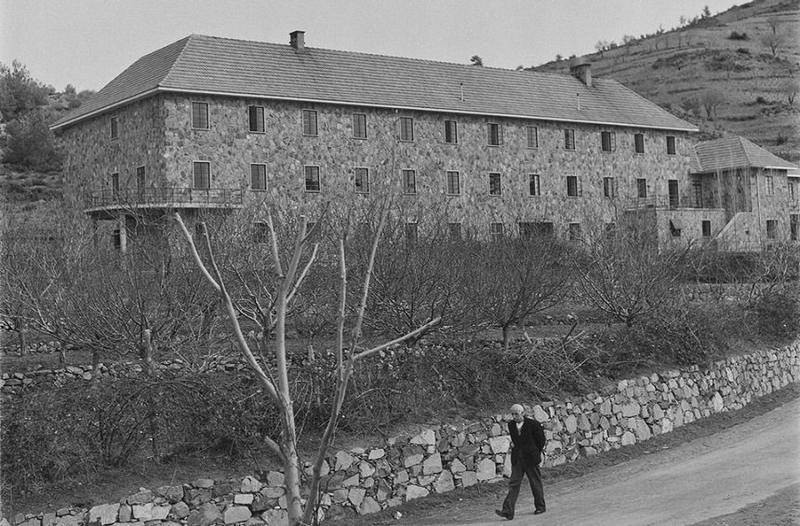
The imposing stone building that welcomes you upon entering the largest mountain village of Limassol, and all of Cyprus, is the center of attention in Kyperounda, and it's not hard to see why.
Approximately 8 decades ago, this building was the root of many controversies in the area. In the 1940s, tuberculosis was a disease surrounded by many taboos and preconceptions. The sanatorium, which admitted tuberculosis patients from the mountain areas of Limassol, was certainly not welcomed initially. In time, however, it proved to be one of the area's most important developments.
The plans for fighting tuberculosis in Cyprus date back to 1935. During that time, the island was poor, most families were quite large, and living conditions in the countryside were very difficult. Fear and prejudice, as well as a lack of proper information, made it hard for patients to be diagnosed in time. The Sanatorium in Kyperounda first operated in 1940 with 100 beds, and at the time was the largest and most organized in Cyprus (after the Sanatorium in Pedieos, with just 3 beds, and the Sanatorium in Athalassa, with 50 beds).
Next to the Sanatorium, housing was built for the nursing staff. Visitors would stay a few meters away, at a hostel, which eventually became the modern Livadia Hotel we know now today (check out the hotel here).
The lower humidity levels, combined with added protection from northwesterly winds and an abundance of sunshine were the criteria that made Kyperounda an ideal choice, as its climate was ideal for the rehabilitation of tuberculosis patients. Initially, a location near Trooditissa Monastery was chosen for the Sanatorium, but due to objections from the residents of Fini village, a new location had to be found. The sanatorium was eventually built in its current location with the help of Kyperounda community head, Georgios Fakas, who donated a piece of land for this purpose. Of course, the superstition and fear did not dissipate, and the residents of the village would always turn their backs to the Sanatorium when passing by.
After 1974, when the cases of tuberculosis decreased, the Sanatorium became the regional Kyperounda Hospital. Today, a Pneumatological Clinic is still in operation at the hospital for diagnosing and treating new cases of the disease.
Photos: omnia.ie, Library of Cyprus University of Technology
* NOTE: The tributes of the Project "History of Limassol" present information that has emerged from historical research thus far. Any new data is embedded into the tributes, once it has been confirmed.